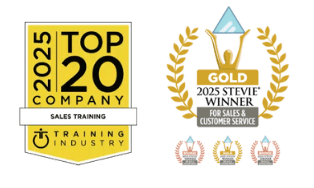Let’s take a closer look at business value.
When we focus on this, it needs to be framed as the value our solution or service is going to deliver to our client. It is not about us and the features of our solutions. What is the value to our client? Are we enabling our client to increase revenues, profits, enter new markets, and beat their competitors? Or are we simply enabling our client to improve operations and lower costs? Maybe it is a combination of these.
Researching and developing a point of view on what we believe to be business value is crucial.
Next, let’s consider who wins.
Who is it that we need to convince? When responding to a known need, maybe through an RFP/RFI process, the project and procurement team charged with selecting a supplier must be convinced. But what about when we are aiming to create new business value for our client? This might involve those outside the client evaluation team. So, we need to align our proposition with a business priority of one or more senior client executives that have the power to assign budget, commit resources, and most importantly, say YES to our business proposition – the real decision makers.
How do we do that?
Every senior executive works with a handful of annual key business objectives. Our job as sales professionals is to know what these are for the executives we choose to target.
Using existing relationships with our supporters, annual reports, social media, chairman and CEO statements, etc. we can start to understand which priorities our client organization will be focusing on in the coming year.
Then, by mapping our client organization, we can determine who the key decision makers would be that could say yes to our business value proposition. Once they have been identified, we need to baseline our current relationships with these individuals.
From there, we need to establish how these corporate priorities manifest for each of our target executives in terms of creating their business priorities.
To be successful, our value proposition needs to help enable our target executives to achieve at least one of their business priorities. This will get them to meet with us.
From here, we move into our executive engagement planning. Meet key client executives to share our point of view of their business. Identify the challenges and opportunities that we have researched. Present the business value we believe we can deliver. All in the name of exciting them to gain their commitment of working with us.
Demonstrating how we can help them achieve their business priorities builds trust and confidence in us as a person. But to really be successful, we don’t stop there. We push beyond their business priorities. We seek to understand their personal agendas. The project or initiative we are proposing can also have a personal gain for them if it proceeds.
An approach I have used many times comes in towards the end of a business conversation. I explain we believe we understand all the key requirements the client has for the project or initiative. Having worked hard and gained their trust, they will often be open to sharing a view into their personal agenda. This is where I try to hook into that and how exciting this project is and what it can do for them personally, be it success, significance, or security.
When we leverage our value proposition to achieve both business priorities and advance their personal agendas, we can differentiate from competitors and increase momentum towards successful deal closure.
Now, when you ask yourself, “who wins?” you will always know it is the client.
Personal Challenge:
Early in the sales process, try to answer our three key questions from this article. It’s ok not to know the answers about business value or who wins in the early stages. If you do not know, that just means you have to put in the work to uncover the client’s business priorities, align your value proposition to these, and seek insight to their personal agendas to align to.




